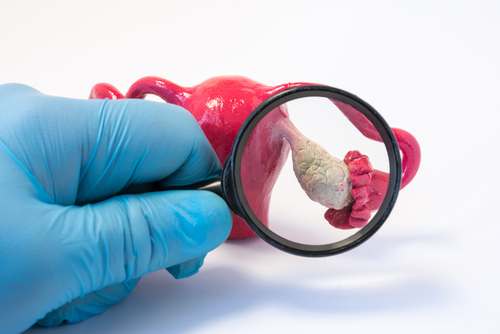Combining two imaging methods can provide a more accurate sampling of single tumors — like those found in ovarian cancer — thus allowing doctors to capture the diverse cancer cells in the tumor with fewer biopsies, a new study found.
The study, “Ultrasound-guided targeted biopsies of CT-based radiomic tumour habitats: technical development and initial experience in metastatic ovarian cancer,” was published in European Radiology.
One of the challenges in treating cancer is that a single tumor is usually heterogeneous, meaning it contains many different kinds of cells. Not only are there normal cells — such as immune and structural cells, among others — alongside the tumor cells, but there also frequently are genetic differences between cancer cells within the same tumor.
Since these differences may make certain cells more or less likely to respond to different treatments, understanding the full breadth of differences within a tumor is important for making treatment decisions.
Typically, assessing the makeup of tumors is accomplished via a biopsy, in which a piece of the tumor is taken out of the body for analysis. However, taking biopsies is an invasive procedure, so there is a need for technology that can act as a guide when doing this sampling.
In the new study, researchers at the University of Cambridge, in England, developed such a technique by combining computed tomography (CT) scans and ultrasound. The new technique was used in treating ovarian cancer patients.
Ultrasound is a technique that uses sound waves to assess the location and shape of structures within the body. In concept, it is similar to the echolocation that bats and other animals use. Specifically, based on how the sound waves bounce back, a machine can determine where a particular structure — in this case, a tumor — is located in the body. Since ultrasound imaging can be done in real-time without an extensive equipment setup, it is often used to guide biopsy sampling as the sampling itself is taking place.
In a CT scan, many two-dimensional image “slices” are made of the body using x-rays. A computer then combines these slices in order to generate a three-dimensional image.
Conceptually, the researchers’ technique involves first doing a standard-of-care CT scan to identify different tumor “habitats,” or areas within the same tumor that look different from each other on the scan. Prior research has indicated that the structural differences that can be seen on these scans often correspond to genetic differences among the tumor cells.
Next, the image generated via the CT scan is fused with the ultrasound image when the biopsy is performed. That, ultimately, allows clinicians to take samples from the different tumor habitats.
The researchers demonstrated the feasibility of this technique by taking biopsies from six people with high-grade serous carcinoma (HGSOC), the most common form of ovarian cancer. Notably, in one of the patients, the researchers were able to obtain sufficient tumor tissue from two different tumor habitats to do further analysis.
“In this technical development study, we demonstrated the feasibility of prospective sampling of CT-based radiomic habitats using US-guided fusion biopsies in patients with HGSOC prior to [treatment],” the researchers concluded.
They noted that their approach has several limitations, which might be improved with further research. For instance, some of the tumor habitats identified by the CT scan were too small for a biopsy to be feasibly taken.
“This trade-off between computational precision and practical feasibility and safety will need to have a clinical decision,” the researchers wrote. They suggested using habitats that are at least three square centimeters in size, and sampling no more than three different habitats within a given tumor.
“This study provides an important milestone towards precision tissue sampling,” Evis Sala, MD, PhD, a professor at Cambridge and a study co-author, said in a press release.
“We are truly pushing the boundaries in translating cutting edge research to routine clinical care,” Sala said.
The team now is planning to test this method in larger studies with more patients, which will be necessary to fully understand how image-based differences correspond to molecular variations in the tumor cells themselves.
“When you are first undergoing the diagnosis of cancer, you feel as if you are on a conveyor belt, every part of the journey being extremely stressful,” said Fiona Barve, 56, a science teacher who lives near Cambridge. Barve was diagnosed with stage 4 ovarian cancer in 2017 and underwent treatment; she has been cancer-free since 2019.
“This new enhanced technique will reduce the need for several procedures and allow patients more time to adjust to their circumstances,” Barve said. “It will enable more accurate diagnosis with less invasion of the body and mind.”
“This can only be seen as positive progress,” she added.

